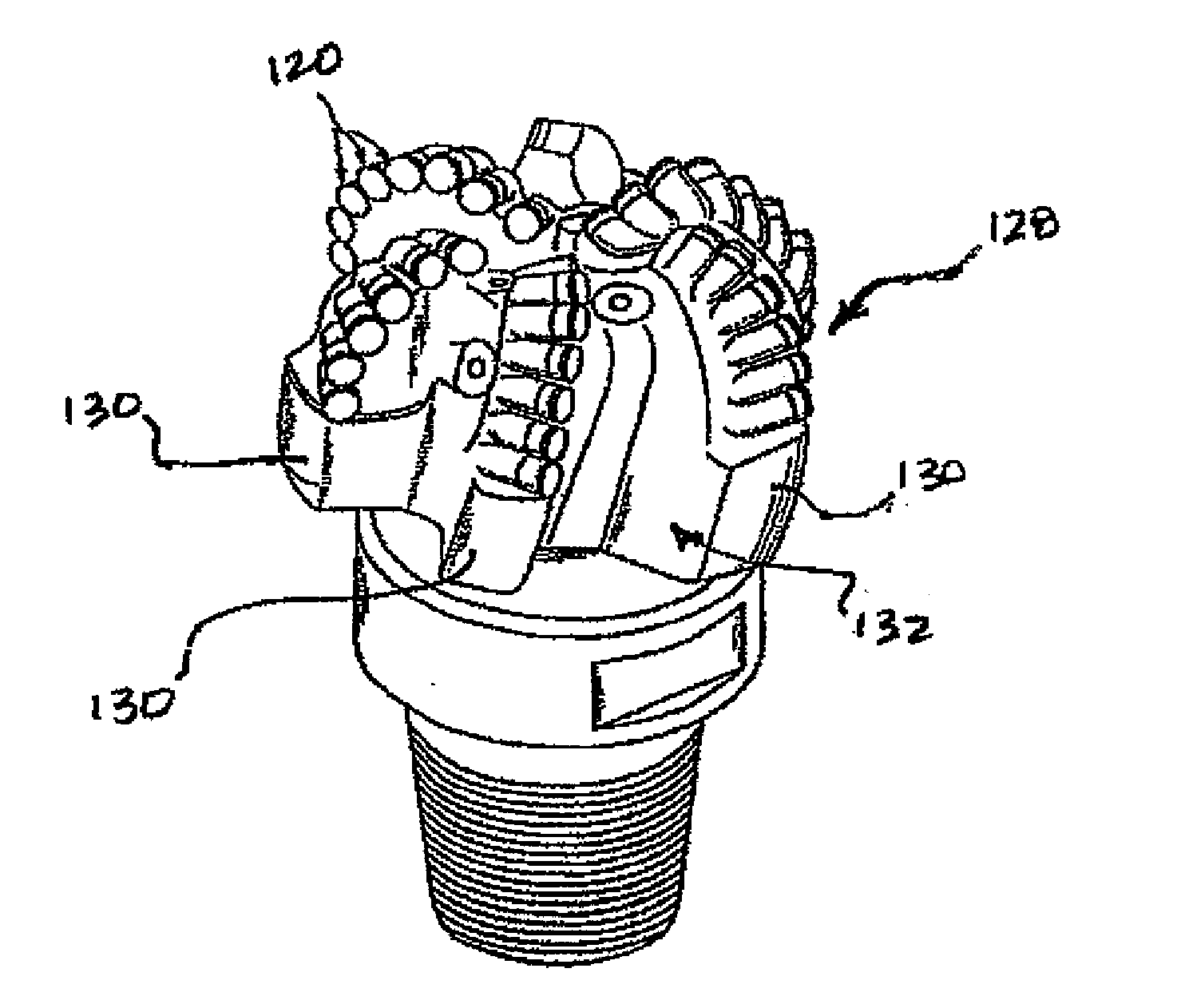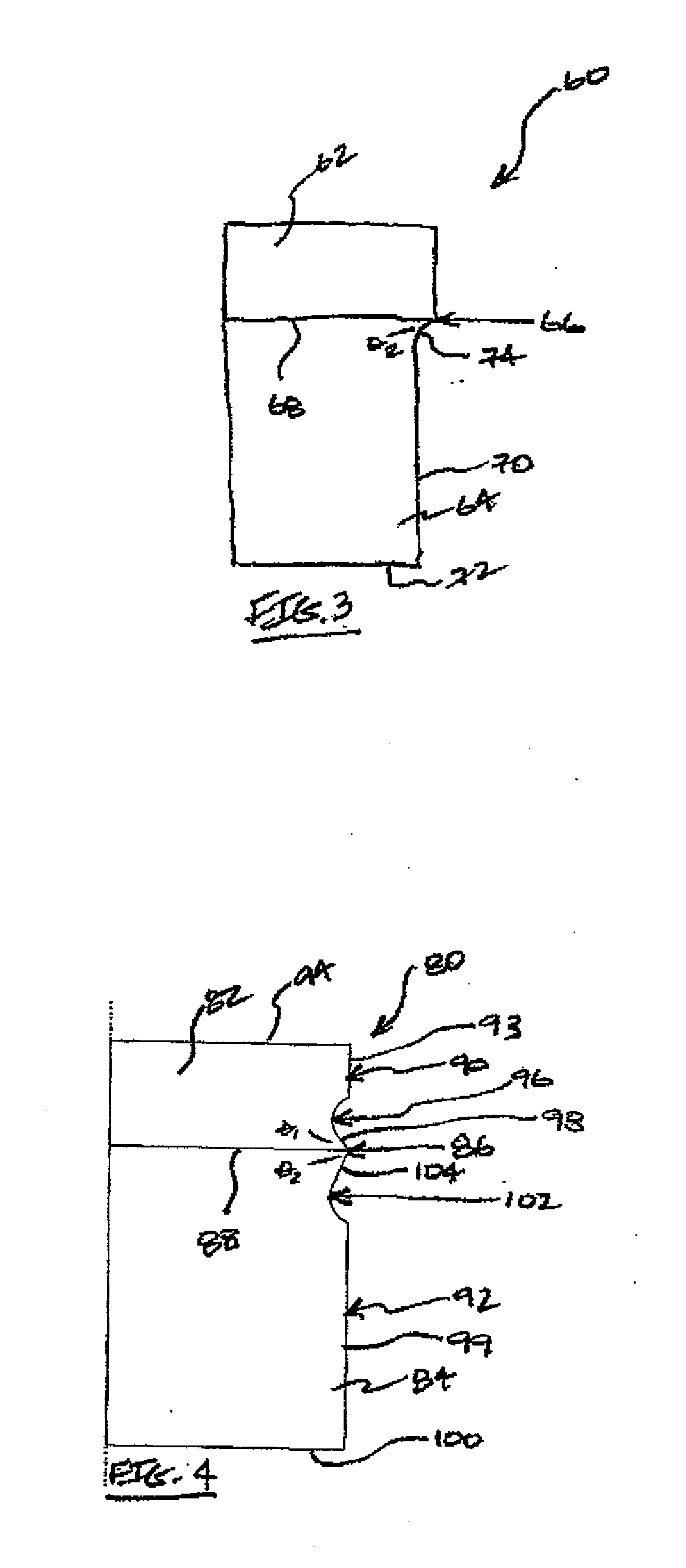Cutting element having stress reduced interface
a cutting element and interface technology, applied in the field of cutting elements, can solve the problems of reducing the service life of the desired cutting element, so as to prolong the effective service life of the cutting element
- Summary
- Abstract
- Description
- Claims
- Application Information
AI Technical Summary
Benefits of technology
Problems solved by technology
Method used
Image
Examples
embodiment 40
[0026]FIG. 2 illustrates a cutting element embodiment 40 comprising an ultra-hard body 42 that is attached to a substrate 44, wherein the materials used to form the ultra-hard body and substrate in this cutting element can be the same as those described above for forming conventional cutting elements. In an example embodiment, the ultra-hard body is formed from TSP and the substrate is formed from WC—Co. In this particular embodiment, the ultra-hard body 42 has been joined to the substrate 44 through the use of a braze material or the like. In this particular embodiment, the stress singularity was reduced by changing an angle of departure with the interface between the body and substrate to less than 90 degrees within the body by changing the geometry of a free surface or side surface 46 of the cutting element adjacent the interface 48.
[0027]In this particular embodiment, a side surface 46 of the ultra-hard body 42 has been configured to provide a desired angle of departure θ1 of le...
embodiment 80
[0042]A feature of this cutting element embodiment 80 is that the presence of the grooves 96 and 102 in the respective side surfaces of the ultra-hard body 82 and substrate 84 operates to reduce the respective angles of departure θ1 and θ2 within each of the ultra-hard body and the substrate to less than 90 degrees, thereby reducing the stress singularity of the resulting cutting element. The angle of departure, and / or the particular geometry of the grooves and the respective flared region, that is provided according to this embodiment reflects a consideration of what is useful for reducing the stress singularity as noted above, as well any impact such change to the outer surface geometry of the cutting element could have on the cutting element performance and / or service life. The desired configuration of the hard-body and substrate side surfaces can be provided during sintering or by machining.
[0043]While the embodiment in FIG. 4 has been illustrated and described as having an ultr...
PUM
| Property | Measurement | Unit |
|---|---|---|
| angle of departure | aaaaa | aaaaa |
| angle | aaaaa | aaaaa |
| angle | aaaaa | aaaaa |
Abstract
Description
Claims
Application Information
 Login to View More
Login to View More - R&D
- Intellectual Property
- Life Sciences
- Materials
- Tech Scout
- Unparalleled Data Quality
- Higher Quality Content
- 60% Fewer Hallucinations
Browse by: Latest US Patents, China's latest patents, Technical Efficacy Thesaurus, Application Domain, Technology Topic, Popular Technical Reports.
© 2025 PatSnap. All rights reserved.Legal|Privacy policy|Modern Slavery Act Transparency Statement|Sitemap|About US| Contact US: help@patsnap.com



